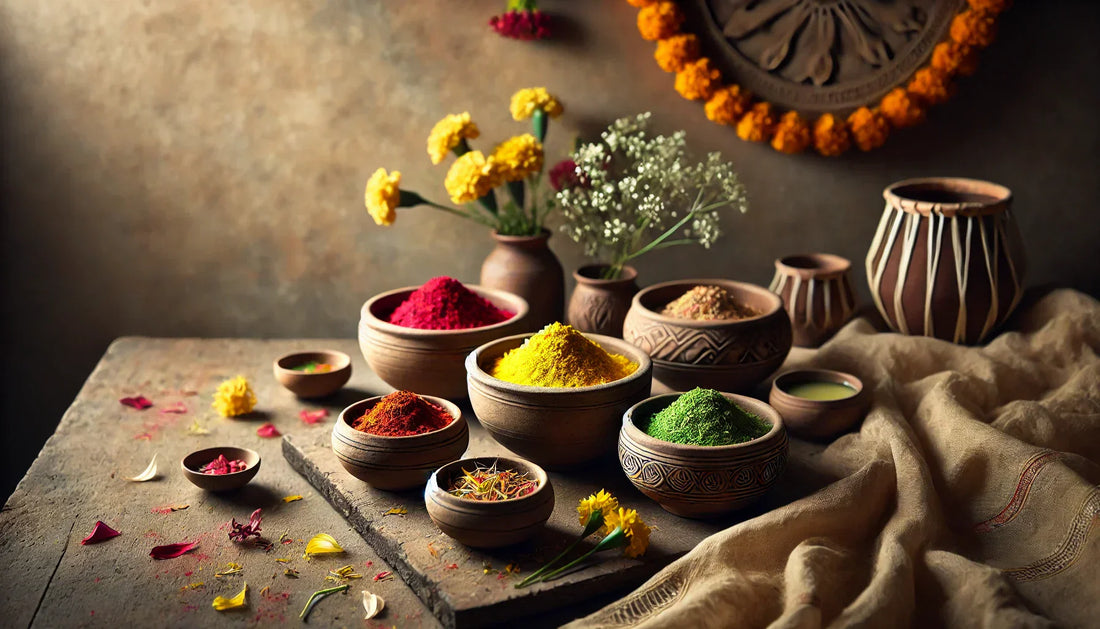
A Sustainable Holi: Celebrating with Safe and Organic Colors
Holi, the festival of colors, joy, and togetherness, marks the arrival of spring and the victory of good over evil. It is a celebration of love, happiness, and unity, where families and friends come together in a playful splash of vibrant colors. Traditionally, Holi was celebrated with flowers and herbal colors, making it a safe, eco-friendly, and holistic experience.
However, modern Holi celebrations often involve synthetic colors, which pose very serious health risks and harm the environment. While they add vibrancy to the festival, they come with a dark side—containing toxic chemicals, heavy metals, and artificial dyes. These harmful elements can cause allergies, respiratory issues, and long-term skin damage while also polluting water bodies, soil, and harming wildlife.
The Hidden Dangers of Synthetic Holi Colors
The Holi colors available in the market today are often mixed with hazardous substances such as:
✅ Mercury – Causes skin allergies and nerve damage
✅ Lead – Affects the nervous system and kidneys
✅ Silica & Mica – Harmful to the skin and respiratory system
1. Respiratory Issues
- Synthetic colors contain fine chemical particles that can become airborne when thrown.
- Inhaling these particles can cause irritation, inflammation, and breathing difficulties.
- People with asthma or bronchitis are more prone to severe reactions.
- These chemicals can also trigger allergic reactions like coughing, sneezing, and sore throat.
2. Skin Allergies & Damage
- Harsh chemicals in colors strip the skin of natural oils, leading to dryness, irritation, and redness.
- Some colors contain highly reactive dyes that can cause chemical burns, rashes, or even permanent skin discoloration.
- Prolonged exposure to such toxins can lead to long-term dermatological issues.
3. Eye Irritation & Damage
- If synthetic Holi colors come in contact with your eyes, they can cause severe irritation, itching, and redness.
- Fine particles in these colors may scratch the cornea, leading to temporary or permanent vision issues.
4. Environmental Pollution
- When these toxic colors mix with soil, they contaminate it permanently, affecting plant life.
- The chemicals seep into groundwater, making it unsafe for consumption.
- Disposed colors in water bodies can be lethal to aquatic animals and disrupt ecosystems.
A Greener & Safer Alternative: Natural Holi Colors
Switching to eco-friendly, natural Holi colors is the best way to celebrate responsibly. Traditionally, Holi was played with herbal powders and flowers, which are completely safe for both humans and nature.
✅ Skin-Friendly – No harsh chemicals, no skin damage
✅ Non-Toxic – Safe even if accidentally ingested
✅ Biodegradable – Does not pollute soil or water
✅ Preserves Cultural Heritage – Revives the original way of celebrating Holi
How to Make Natural Holi Colors at Home
Creating natural Holi colors at home is easy, cost-effective, and fun! Here are some simple DIY recipes for vibrant, eco-friendly colors:
🔴 Red Color
- Method 1: Soak rose petals in water for an hour, then blend and dry.
- Method 2: Mix red sandalwood powder with cornstarch for a dry version.
- Method 3: Dry and grind hibiscus flowers for a rich red hue.
🟡 Yellow Color
- Method 1: Mix turmeric powder with cornstarch or gram flour.
- Method 2: Boil marigold flowers and dry the extract for powdered color.
🩷 Pink Color
- Method 1: Blend beetroot and extract its juice, mix with cornstarch, and let it dry.
- Method 2: Dry and grind rose petals for a soft pink shade.
🟢 Green Color
- Method 1: Mix henna powder, neem powder, or spinach powder with cornstarch.
- Method 2: Blend fresh spinach leaves and dry the paste for a natural green hue.
🟣 Purple Color
- Method 1: Extract juice from jamun (black plum) and mix with cornstarch.
- Method 2: Boil purple cabbage, let the water cool, and use it as a liquid color.
These homemade colors are safe, vibrant, and long-lasting, making them the perfect choice for a chemical-free Holi!
Phoolon Ki Holi: A Beautiful, Traditional Alternative
Another eco-friendly way to celebrate Holi is by playing Phoolon ki Holi (Flower Holi). This beautiful tradition, still followed in Mathura’s Banke Bihari temple, involves playing with flower petals instead of powders.
🌸 Completely natural and biodegradable
🌸 Safe for skin and hair
🌸 Visually stunning and fragrant
🌸 Preserves Indian heritage and customs
Phoolon ki Holi is a gentle, respectful, and environmentally responsible way to enjoy the festival without harming nature.
Why You Should Switch to Natural Holi Colors
✅ Better for your skin – No allergies, rashes, or burns.
✅ Better for your health – No risk of inhaling toxic chemicals.
✅ Better for the environment – No water or soil pollution.
✅ Better for animals – No harm to aquatic or land creatures.
✅ Better for tradition – Reviving the ancient practice of celebrating with flowers and herbs.
This Holi, Make a Change!
Holi is about spreading joy, love, and positivity—not harming ourselves or the planet. This year, let's take a step towards a healthier, safer, and more eco-friendly celebration.
✅ Say NO to synthetic colors
✅ Say YES to natural, homemade colors
✅ Revive the tradition of Phoolon ki Holi
✅ Celebrate responsibly and sustainably
This Holi, let's bring back the magic of nature, preserve our cultural heritage, and protect our health and environment—one color at a time!
Wishing you a Happy, Safe & Eco-Friendly Holi!
